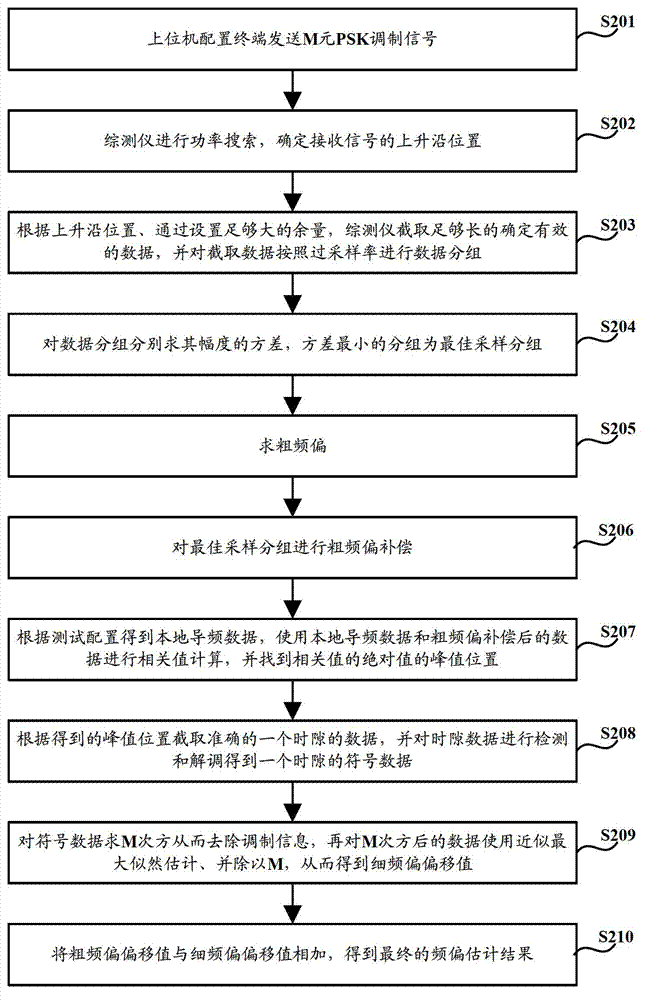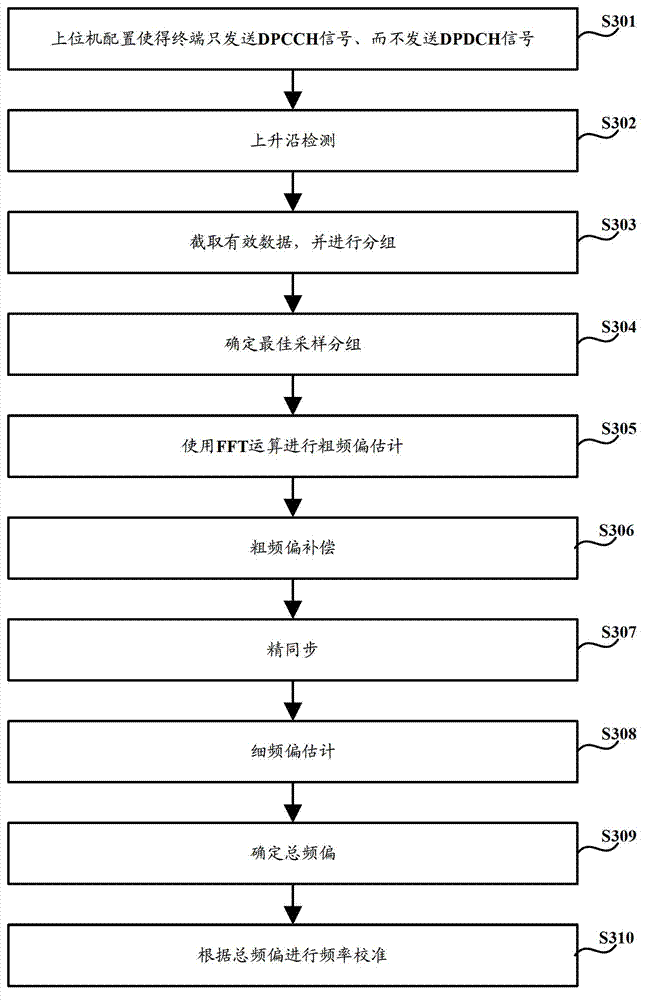Frequency calibration method and device
A frequency calibration and variance technology, applied in the field of frequency calibration methods and devices, can solve the problems of increased processing delay, difficulty in setting the threshold of peak validity, uncertain delay, etc.
- Summary
- Abstract
- Description
- Claims
- Application Information
AI Technical Summary
Problems solved by technology
Method used
Image
Examples
Embodiment 1
[0121] This embodiment is the frequency calibration during AFC calibration in the modulation signal mode in the WCDMA system.
[0122] Such as image 3 As shown, the frequency calibration method includes:
[0123] Step S301, host computer configuration β c =15 and β d = 0, so that the terminal only transmits DPCCH signals, but not DPDCH signals. The purpose of this configuration is to obtain the modulated signals of the standard QPSK constellation diagram, so as to facilitate the removal of modulation information, thereby performing frequency offset estimation.
[0124] Step S302, rising edge detection:
[0125] Assuming that the comprehensive tester receives a wireless frame of data r=[r(0), r(1),...,r(N-1)], N=OSR*N c *N slot , where OSR is the oversampling rate, N c =2560 is the number of chips in one time slot of the DPCCH channel, N slot =15 is the time slot number of input data;
[0126] Compute the power value for a sliding window of received signal samples: ...
Embodiment 2
[0189] This embodiment is in the TD-SCDMA system, the frequency offset estimation during the AFC calibration under the 12.2kbps modulation signal mode, and it is assumed that the timing synchronization has been performed before the frequency offset estimation, and the timing synchronization process is the same as the timing synchronization process in the first embodiment same.
[0190] Such as Figure 4 As shown, the frequency calibration method includes:
[0191] Step S401, the host computer configures the terminal to send the QPSK-modulated DPCH signal in the allocated uplink time slot. In addition, the host computer also needs to configure the scrambling code number, the basic Midamble code (intermediate code) number, and the scrambling code number (according to the protocol scrambling code) sent by the terminal. The code number is equal to the basic midamble number), the midamble offset, and the spreading factor and spreading code.
[0192] Step S402, rising edge detecti...
PUM
 Login to View More
Login to View More Abstract
Description
Claims
Application Information
 Login to View More
Login to View More - R&D
- Intellectual Property
- Life Sciences
- Materials
- Tech Scout
- Unparalleled Data Quality
- Higher Quality Content
- 60% Fewer Hallucinations
Browse by: Latest US Patents, China's latest patents, Technical Efficacy Thesaurus, Application Domain, Technology Topic, Popular Technical Reports.
© 2025 PatSnap. All rights reserved.Legal|Privacy policy|Modern Slavery Act Transparency Statement|Sitemap|About US| Contact US: help@patsnap.com



